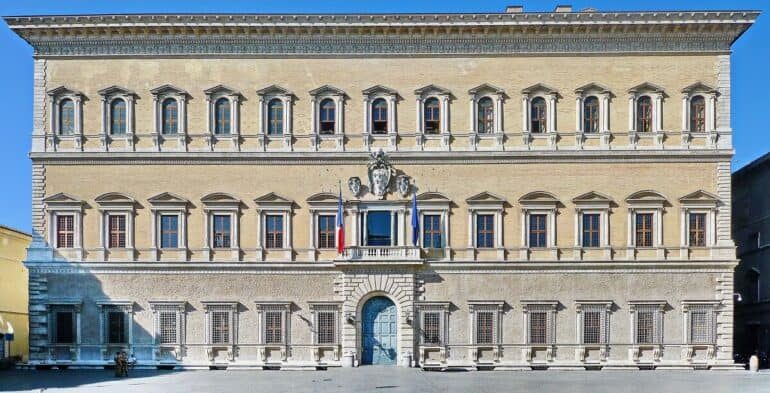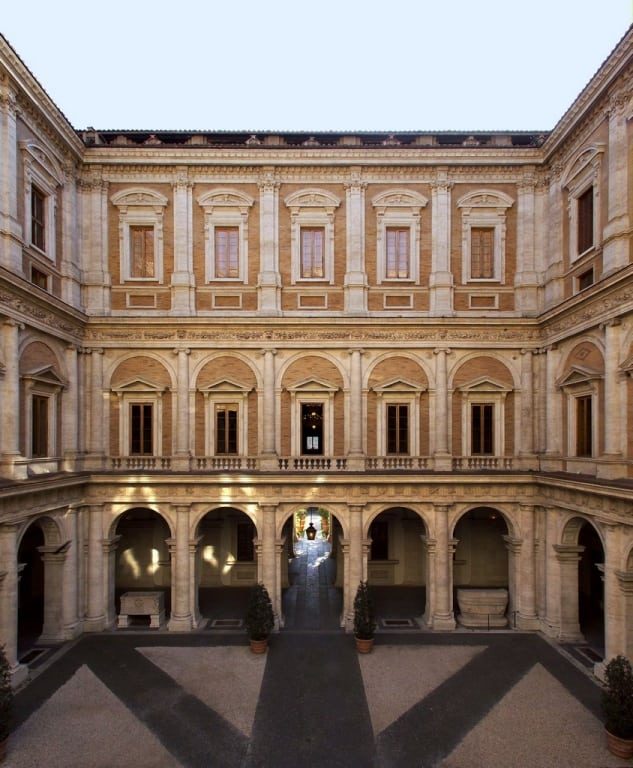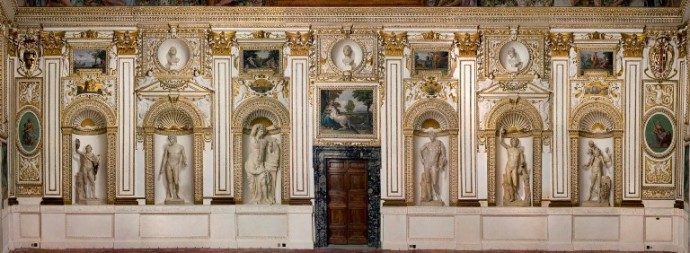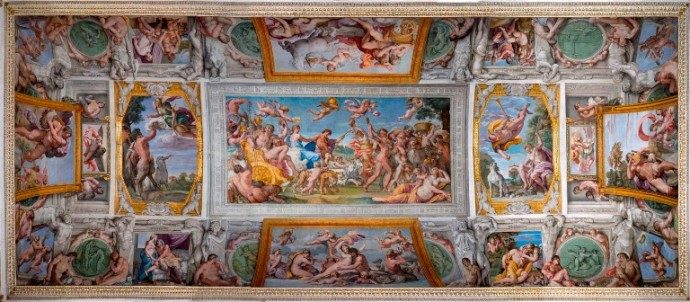Palazzo Farnese, the Jewel of the Renaissance
Considered one of the “four wonders of Rome“, Palazzo Farnese is a true Renaissance jewel in the heart of the Eternal City, long the pride of the influential dynasty of collectors and patrons from which it took its name.
Overlooking the square of the same name, this treasure chest, since the end of 2021, after a long pause, has reopened its doors to the public who can admire the interior by booking guided tours on the official website of the Palace.
Its construction began in 1513 at the request of Cardinal Alessandro Farnese, to be completed after seventy-six years of work and the intervention of illustrious “archistars” of the time including Sangallo the Younger, Michelangelo, Vignola, Antonio Cipolla.
From 1860 to 1863 it was the residence of Francesco II of Naples who, in 1874, rented part of it to the French government which moved its embassy there and then bought it in 1911. Subsequently, it was bought back by the Italian State in 1936, and at the same time, it was rented back to France for 99 years for a symbolic sum, as part of a pact that provided for the concession to the Italian State, under the same conditions, of the Hotel de La Rochefoucauld-Doudeauville, the current seat of the Italian Embassy in Paris.
Lying on Piazza Farnese adorned with fountains, with its facade articulated on three floors, Palazzo Farnese, besides being the French Embassy, hosts one of the two seats of the École française de Rome.
The triumph of Carracci
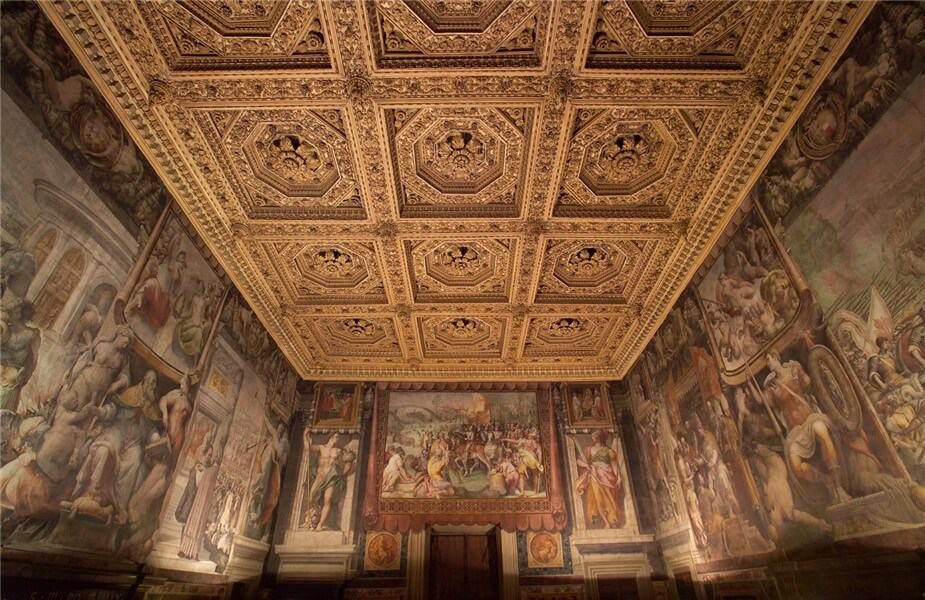
But it is inside that Palazzo Farnese shows its most refined face. The pride and joy of the palace are above all the Cardinal’s Chamber, frescoed in 1547 by Daniele da Volterra, the Sala dei Fasti Farnesiani, the work of Francesco Salviati between 1552 and 1556, and Taddeo Zuccari, who completed it starting in 1563.
The Carracci Gallery, decorated with mythological subjects created by Annibale, initially together with his brother Agostino, between 1597 and 1607 – is a true feast for the eyes, with its triumph of frescoes, stuccoes, colors, plastic figures and mythological scenes that bewitch, also thanks to the trompe-l’oeil effect.
The nude figures recall Michelangelo’s nude figures in the Sistine Chapel, Galatea is a tribute to Raphael and the gaze goes into ecstasy in contemplating profane love and mythological characters, the passions of Polyphemus and Galatea, the muscles of Hercules in the company of Iole, the power of Jupiter, Juno, Diana seduced by Pan, the beauty of Orpheus and Eurydice.
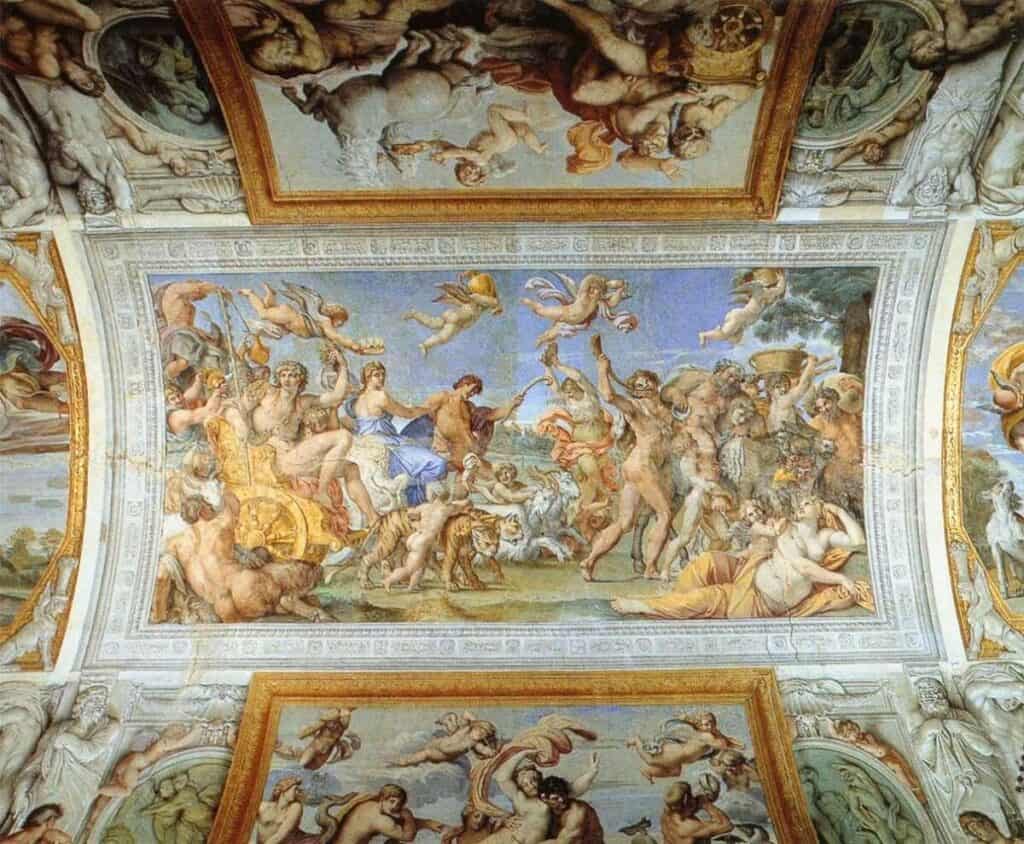
Try looking for the putto that pops out next to a painting, intent on peeing, almost mocking the guests inside this room.
Right in the center of the Gallery, on the vault, there is the Triumph of Bacchus and Ariadne, a festive procession of Sileni and Bacchae that seems to invite the visitors of Palazzo Farnese to get on the golden chariot of the god or on the silver one of his bride. A cherub places a crown made of stars on the head of the woman, elements present in the coat of arms of the Aldobrandini family, to which the Farnese were related. The work was in fact realized in anticipation of the marriage between Ranuccio Farnese and Margherita Aldobrandini, very young niece of Pope Clement VIII.
A jewel worth visiting: the Library of the École française de Rome
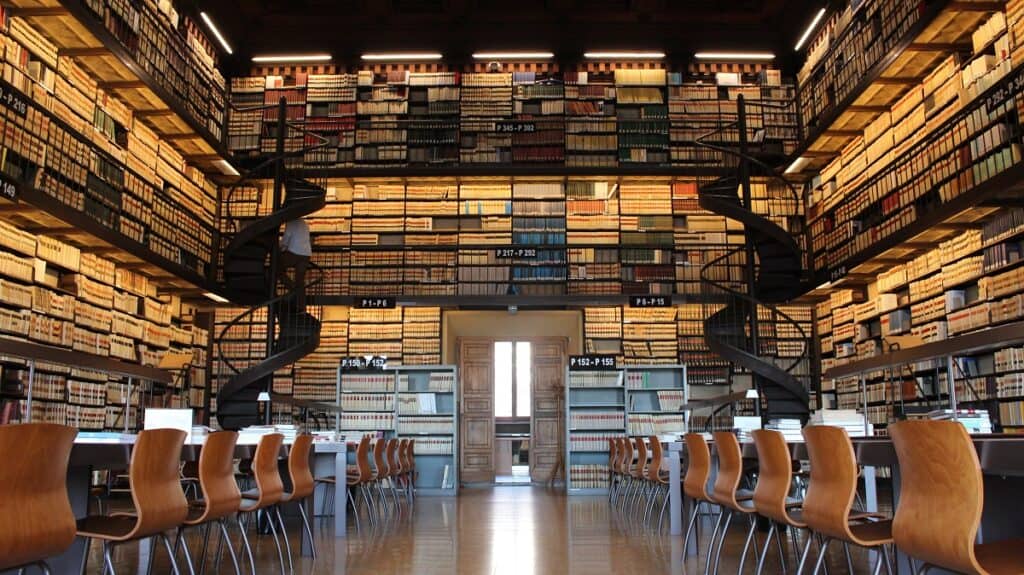
Since 1875, Palazzo Farnese has been home to L’École française de Rome, active in Italy for research and research training in history, archaeology, and humanities, directed since 2019 by Brigitte Marin.
Since the end of 2021, the doors of Palazzo Farnese have been reopened to visitors: it is possible to book a guided tour of the palace or the Palace and Library at www.visite-palazzofarnese.it to admire environments such as the courtyard, the lush garden, the Galleria dei Carracci, and the Sala di Ercole.
At the headquarters of the École française de Rome in Palazzo Farnese, the Friday evening guided tour continues up to the second floor with a presentation of the evocative library – which has over 200 thousand volumes – and the Loggia designed by Vignola on the rear facade.
JR’s gash on the facade of the Palace
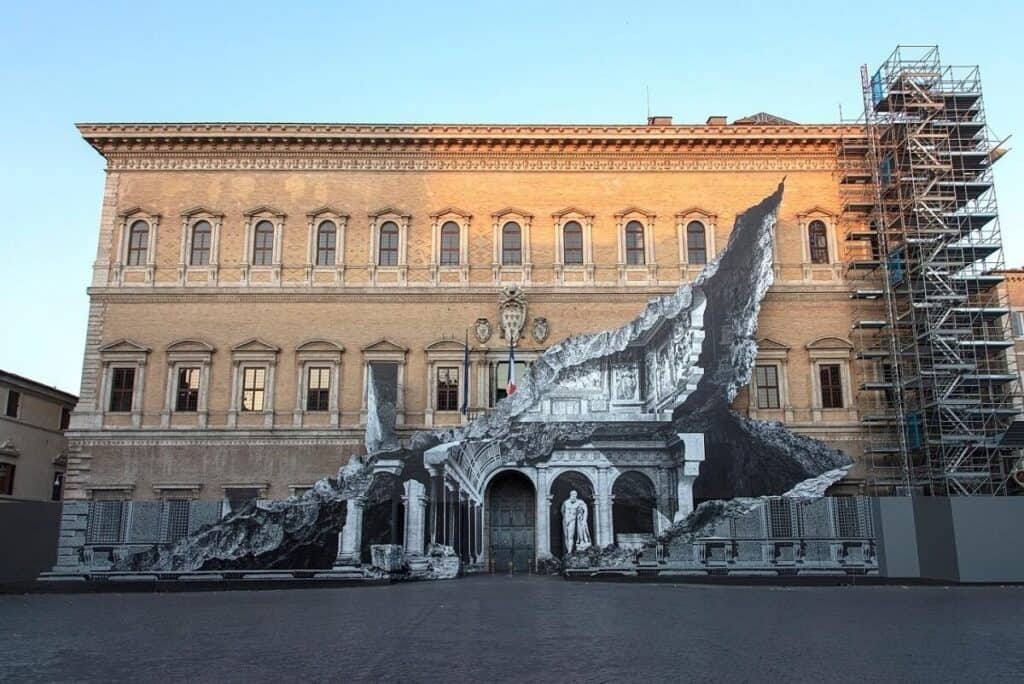
Since July 21, the facade of Palazzo Farnese has been home to a monumental work by French artist JR, created specifically in response to an invitation from the French Embassy in Italy. This spectacular trompe-l’oeil, more than 600 square meters wide and titled Vanishing Point, runs over the palisades and scaffolding, revealing in its own way a real or revisited part of the interior of the Palace. The installation is part of the artistic enhancement program of the site for the restoration of the facades and roofs of Palazzo Farnese, which will offer various contemporary artists the opportunity to pay homage to this elegant Renaissance building in the heart of Rome.
Palazzo Farnese
Piazza Farnese, 67
Guided Tours
Palazzo Farnese: Mon – Wed (3pm-4pm-5pm); Fri (3pm-4pm)
Palazzo Farnese + Ecole française de Rome : Fri at 5pm
Tickets: €12-14
visite-palazzofarnese.it


